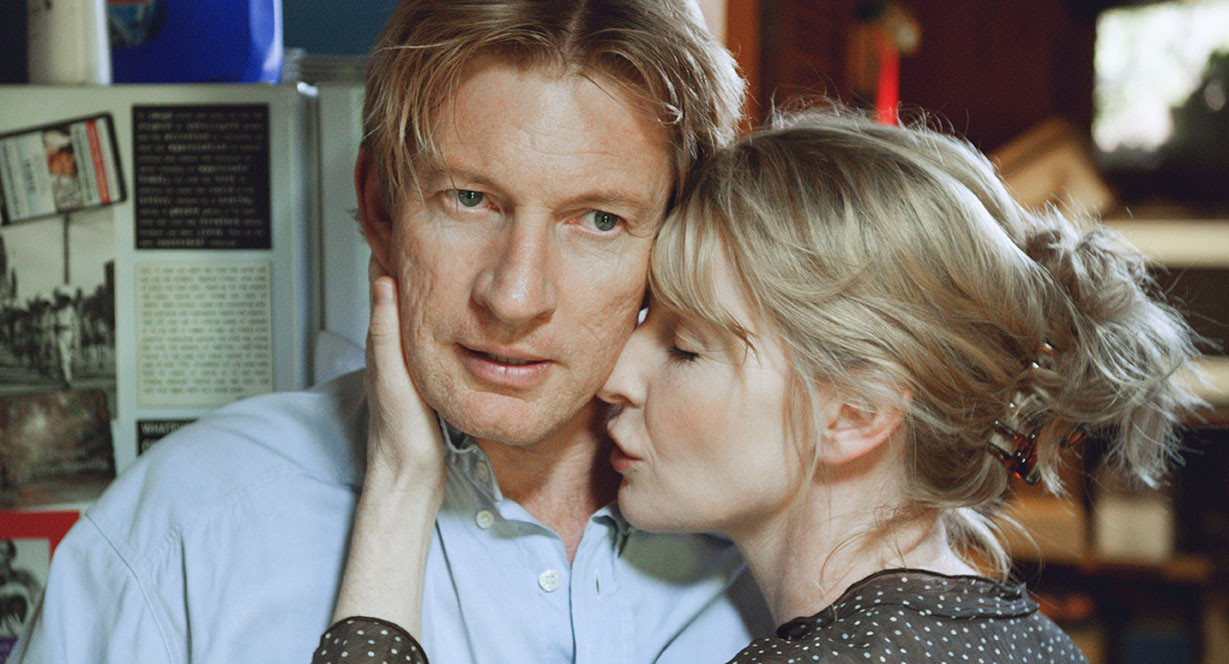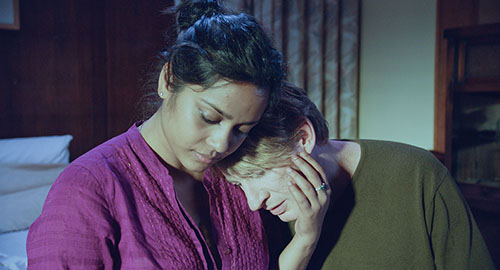FORCE OF DESTINY

Release Date: 2015
by Richard Phillips, WSWS.org
Force of Destiny, veteran filmmaker Paul Cox’s latest feature, is an intimate work about what happens when an individual is diagnosed with terminal cancer and how the ensuing struggle impacts on the victim and his or her immediate friends and relatives.
Cox, who has made over 40 documentaries and features during his four-decade, career is one of Australia’s few independent directors. His most enduring works—Lonely Hearts (1982), Man of Flowers (1983), My First Wife (1984), Vincent: The Life and Death of Vincent van Gogh (1987), A Woman’s Tale (1991), Innocence (2000), Nijinsky: The Diaries of Vaslav Nijinsky (2001)—are emotionally authentic and leisurely paced, low budget films. These stories are mainly drawn from Cox’s own personal experiences (with the obvious exception of the Van Gogh and Nijinsky films) and focus on the life and times of close friends—actors, artists and working-class people—individuals looking for solace in a harsh world. And so it is with his latest film.

The central figure in Force of Destiny is Robert (David Wenham), a middle-aged sculptor living a comfortable but modest semi-rural existence somewhere outside Melbourne. A relatively successful artist, he is pre-occupied with his work until he is given the shattering news that he has terminal cancer and will die if he does not receive a liver transplant within six months.
Robert’s former wife Hannah (Jacqueline McKenzie), his daughter Poppy (Hannah Fredericksen) and various friends do everything they can to assist. Hannah proposes to move back into the sculptor’s house to care for him, an offer he appreciates but rejects.
Still in denial, he is irritated by the fuss being made about him and stubbornly insists that he is capable of dealing with whatever lies ahead. Poppy, his daughter, is one of the few people he feels comfortable with. While not every patient is suitable to receive a liver transplant, Robert is put on the waiting list. Unfortunately there are no appropriate livers available for the sculptor—the organ must be taken from someone recently deceased—and in the months that follow his health rapidly deteriorates.
During these dark and difficult times, Robert meets and falls in love with Maya (Shahana Goswami), a marine biologist from India whose uncle is also dying from cancer. The sculptor’s new-found love and several visits to India give Robert an inner strength despite his failing physical condition. Just when it appears that he will die, a liver becomes available and the transplant is successful.
While Force of Destiny is not entirely autobiographical, the story’s general framework and dramatic underpinnings are drawn from Cox’s personal situation. The 75-year-old filmmaker was diagnosed with liver cancer in 2009 and given six months to live. He was at death’s door when he eventually received a transplant. During post-operative care he met and fell in love with Rosie Raka, another liver transplant recipient and now his partner.
To decide to make Force of Destiny and commence the arduous process of raising the funds for it, followed by the physical demands of the shooting and editing schedules, involved a good deal of courage on Cox’s part. Effectively dramatising the complex emotional issues facing those living on the edge of a life-and-death abyss is a major artistic challenge. Such an endeavour could easily produce an introverted and mawkish work.
Cox has avoided such pitfalls. He has produced an honest, hopeful work and one with strong and committed performances from his cast, several of whom regularly work with the filmmaker. David Wenham, a fine actor, who appears in virtually every scene, is understated and thoroughly convincing. There is real chemistry between him and the three key women in the sculptor’s life..

The filmmaker’s sensitivity to the plight of ordinary people and their inner emotions is a characteristic feature of all Cox’s work. Some of the movie’s most powerful moments are several short scenes in the public hospital cancer ward where working-class patients are stoically, and with real heroism, battling the disease. One of these deeply affecting vignettes involves an old man visiting his wife. He brings her flowers and gently sings to her. Another scene involves a mother on her death bed. She prepares to see her daughter for the last time, applying lipstick and makeup in an attempt to give some colour to her thin and pallid face.
Force of Destiny is not without its weaknesses, however, and lacks the emotional complexity of Cox’s Lonely Hearts and A Woman’s Tale, which were made in the early 1980s and 1990s, respectively.
Robert’s trips to India are somewhat confused—it is not clear when and how he travelled there—and the scenes with Maya’s dying uncle give the movie a mystical edge. These sit uncomfortably with Cox’s naturalistic style. Visual sequences accompanying Robert’s unconscious thoughts and dreams—surreal images of medical procedures and internal organs and old photographs and film clips—are also problematic. While some of this material is striking, Cox overuses the technique and it loses its dramatic impact.
Notwithstanding these drawbacks, Force of Destiny is an optimistic work and one that brings real humanity to its subject matter.
Force of Destiny premiered at this year’s Melbourne International Film Festival but has not yet been given an extended local release in Australian cinemas. Cox continues to fight his own difficult battle with liver cancer and recently learned that the disease had returned and infected the transplanted liver. Despite this, the veteran filmmaker has been energetically promoting the film, appearing at single “special event” screenings in selected cities across Australia over the past three months. Cox’s film deserves wider distribution.
Credits
Written & Directed by: Paul Cox

